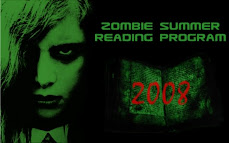 1. 1 Dead in Attic: After Katrina by Chris Rose
1. 1 Dead in Attic: After Katrina by Chris RoseA couple of year ago my friend, Pat Woolf, introduced me to Chris Rose's post-Katrina columns in the Times-Picayune, and I became an avid reader. This compilation of columns on life in the Big Uneasy, the oddly funny, the gut-wrenchingly sad, and the too twisted for color television, is far and away the best book I read this year. A couple of months ago, Rose was invited to appear on Oprah for her Katrina anniversary show. Problem was, they only wanted him to talk about his experience with PTSD and depression; he was explicitly forbidden from mentioning his book, which had been released the week before. Clearly, I do not have Oprah's hit-making track record with book recommendations, but if she wouldn't do it, I feel obligated to say my little bit on Rose's behalf.
2. The Soul of Baseball: A Road Trip Through Buck O'Neil's America by Joe Posnanski
I heard my boss talk about this book during a program at the liberry, and I think he summed it up best. So, to paraphrase him, Buck O'Neil was such a big-hearted and charming man that he's often idealized. Posnanski presents a realistic O'Neil, a man who sometimes gets tired and cranky, who wishes he'd been a better husband. However, by taking him down from the pedestal, O'Neil becomes even more admirable -- an extraordinary human being, not just a baseball figurehead. Two hundred pages isn't nearly enough time to spend with him.
 3. The Baby Thief: The Untold Story of Georgia Tann, the Baby Seller Who Corrupted Adoption by Barbara Bisantz Raymond
3. The Baby Thief: The Untold Story of Georgia Tann, the Baby Seller Who Corrupted Adoption by Barbara Bisantz RaymondThis unbelievable true story of a woman who kidnapped poor children from their families, and sold them to wealthy adoptive families, and whose monstrous legacy impacts U.S. adoptees to this day had me gasping (and cussing) within the first five pages.
4. Agent Zigzag: A True Story of Nazi Espionage, Love, and Betrayal by Ben Macintyre
Another unbelievable and shocking account, Eddie Chapman's adventures as a double agent for MI-5 during World War II read like something straight out of a Ken Follett spy novel.
5. Uncommon Arrangements: Seven Portraits of Married Life in London Literary Circles, 1910-1939 by Katie Roiphe
Roiphe's highly readable account of seven literary marriages shows how very unconventional people made a go of a very traditional institution. And how H.G. Wells was not going to win any husband of the year awards.
6. Better: A Surgeon's Notes on Performance by Atul Gawande
The always engaging and frank Gawande turns in another stellar collection of essays. Whether you're a medical professional or a patient, it's impossible to come away from one of his pieces without a more thoughtful, nuanced perception of health care.
 7. Petal Pusher: A Rock and Roll Cinderella Story by Laurie Lindeen
7. Petal Pusher: A Rock and Roll Cinderella Story by Laurie LindeenLindeen's story of paying her dues big time in a band that only achieved mid-level success is funny, touching, and many cuts above the average rock and roll memoir.
8. Ask a Mexican: Everything You Wanted to Know About Mexicans but Were Too Politically Correct to Ask by Gustavo Arellano
While the premise of Arellano's popular syndicated column may seem, um, wrong, this collection is consistently entertaining, well-informed, and appropriately wise-assed. Whether he's dealing with xenophobic Minutemen, well-meaning gringos, or confused third generation Latinos, Arellano spins even the most offensive, empty-headed questions into cultural studies gold in 500 words or less.
9. Love Is a Mix Tape: Life and Loss, One Song at a Time by Rob Sheffield
In 1997, Sheffield's wife, Renee, died of a pulmonary embolism at the age of 31. Sheffield reflects on her life, and the music that brought them together in this incredibly sad and sweet memoir.
10. The Replacements: All Over But the Shouting by Jim Walsh
Walsh goes the extra mile to create an account that perfectly captures the messed up, drunken angel spirit of the 'Mats, even though fans probably would have gobbled up any old thing.






































